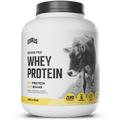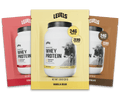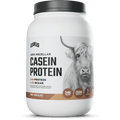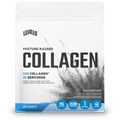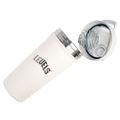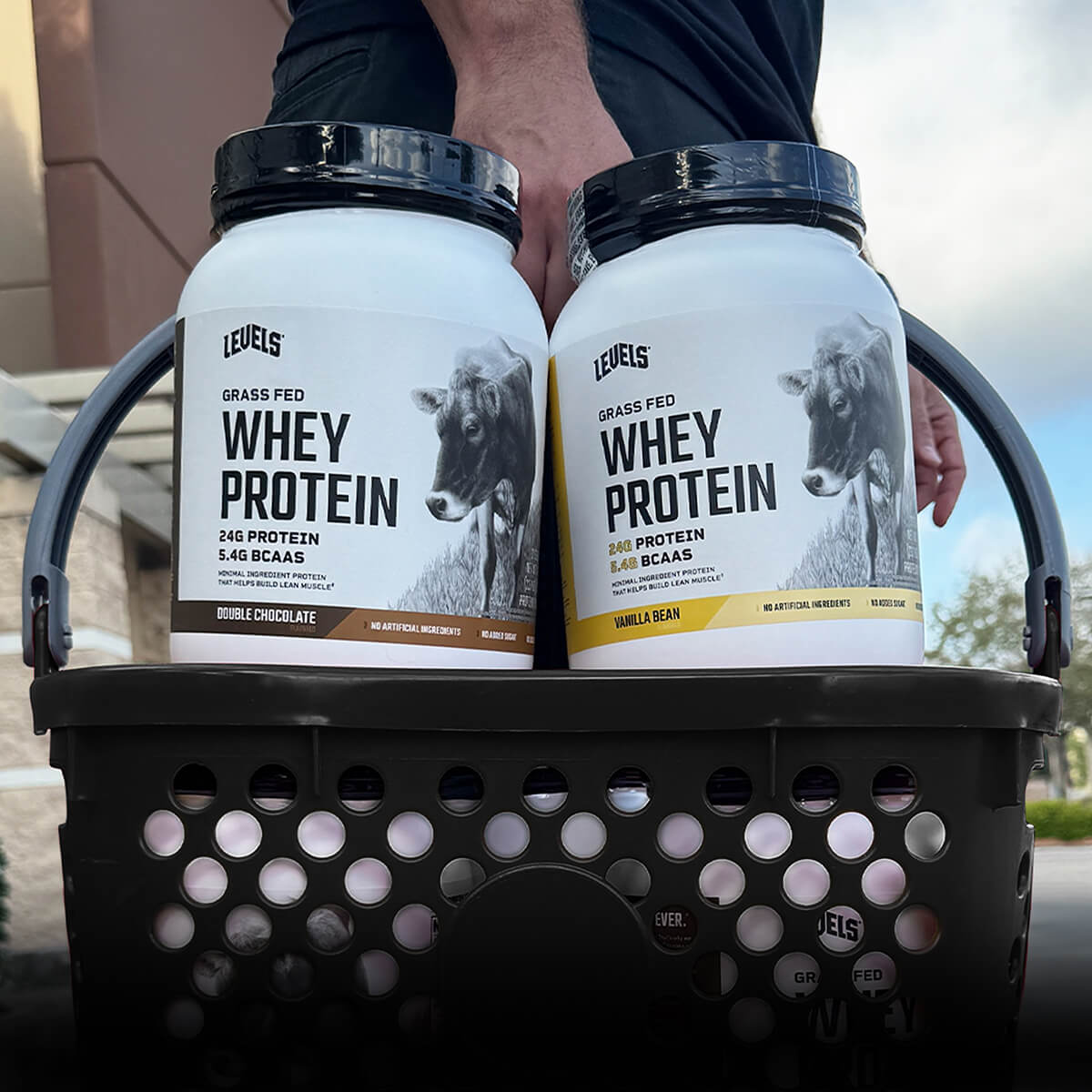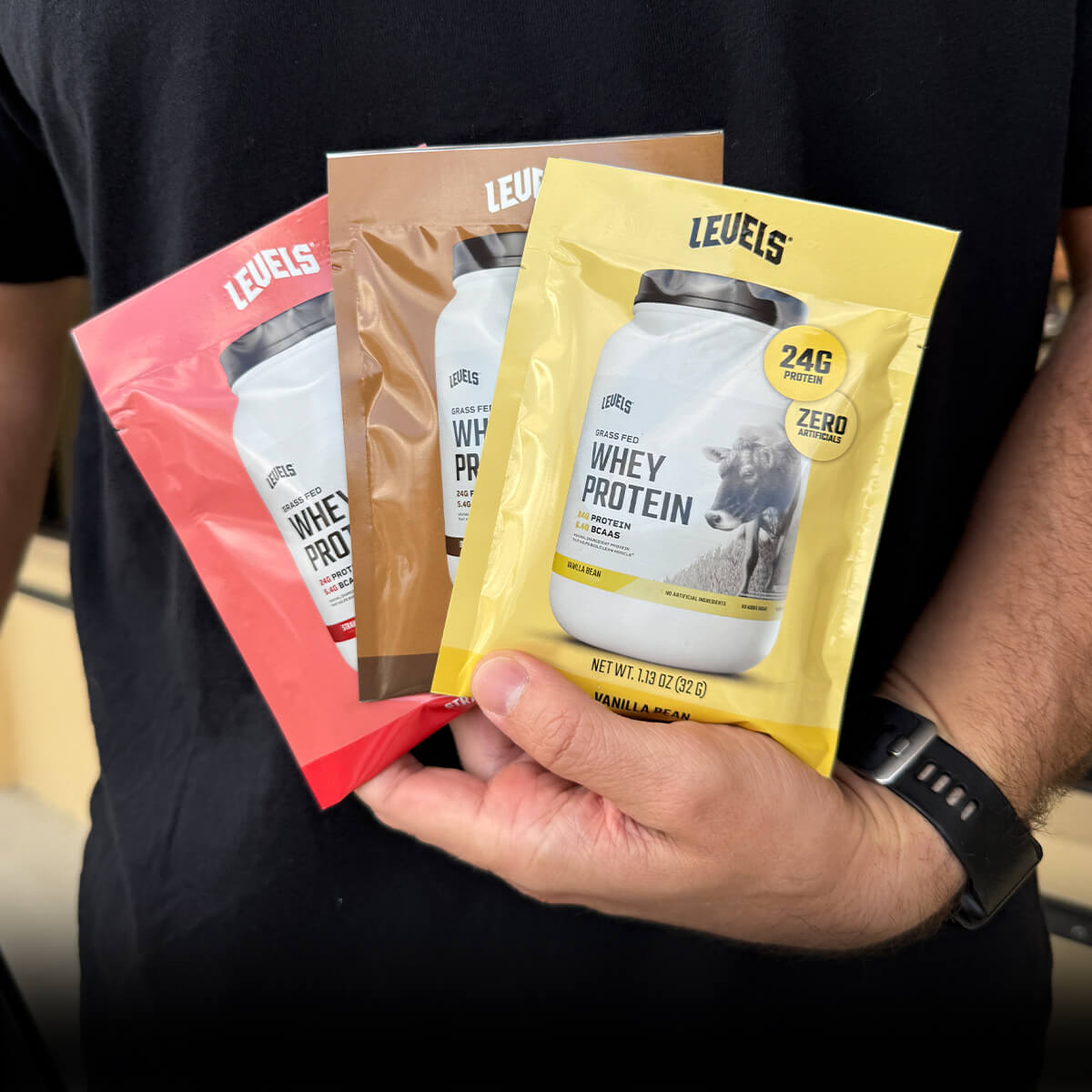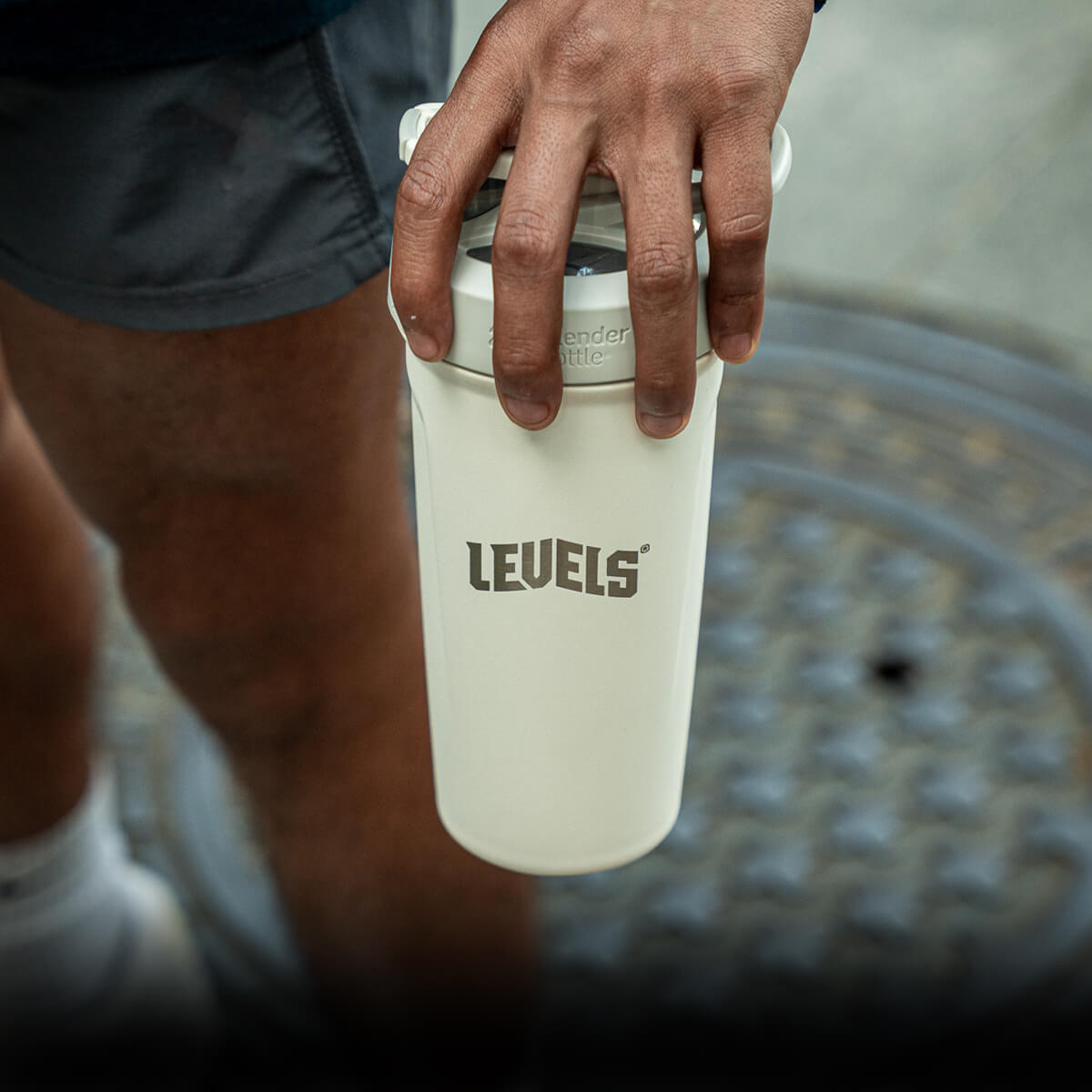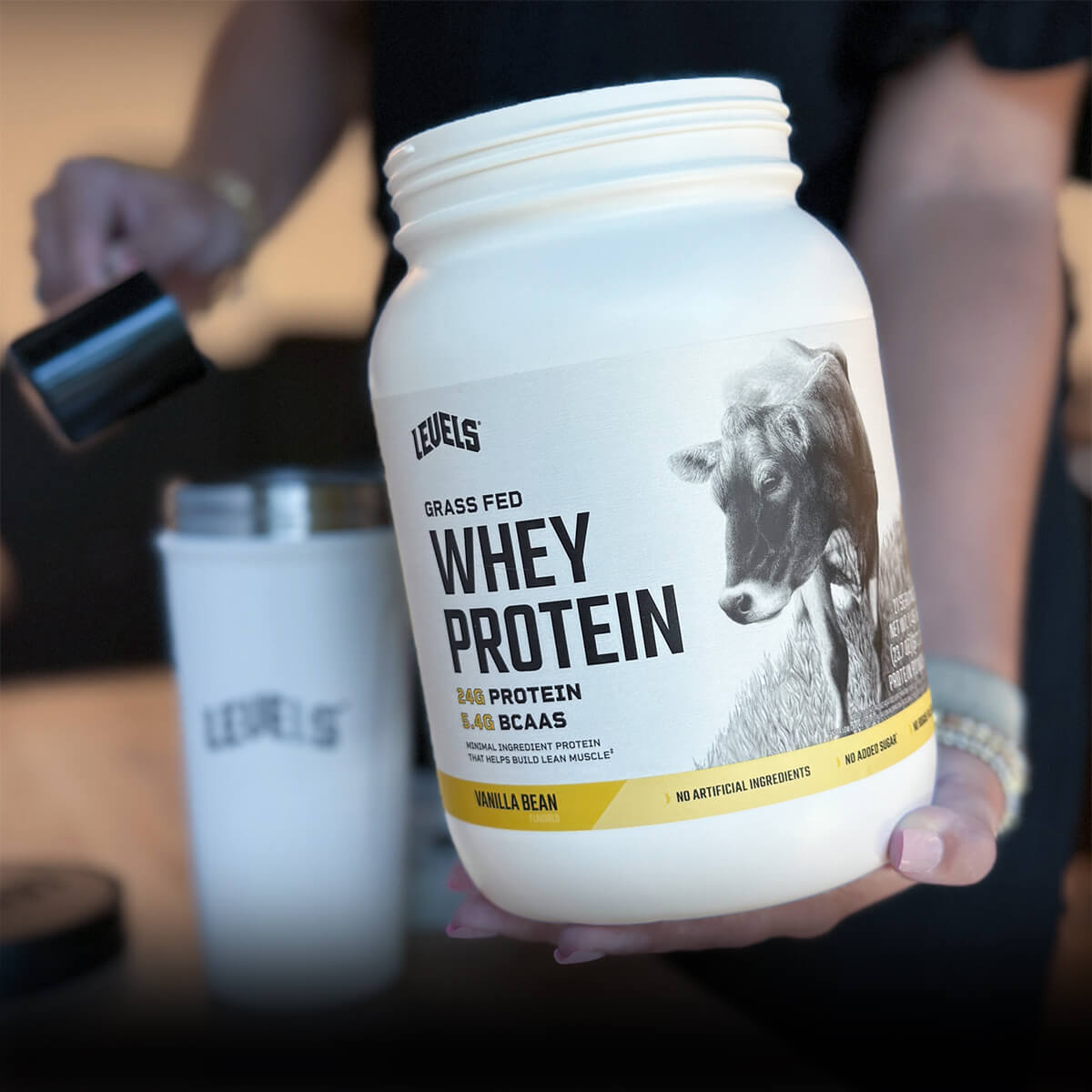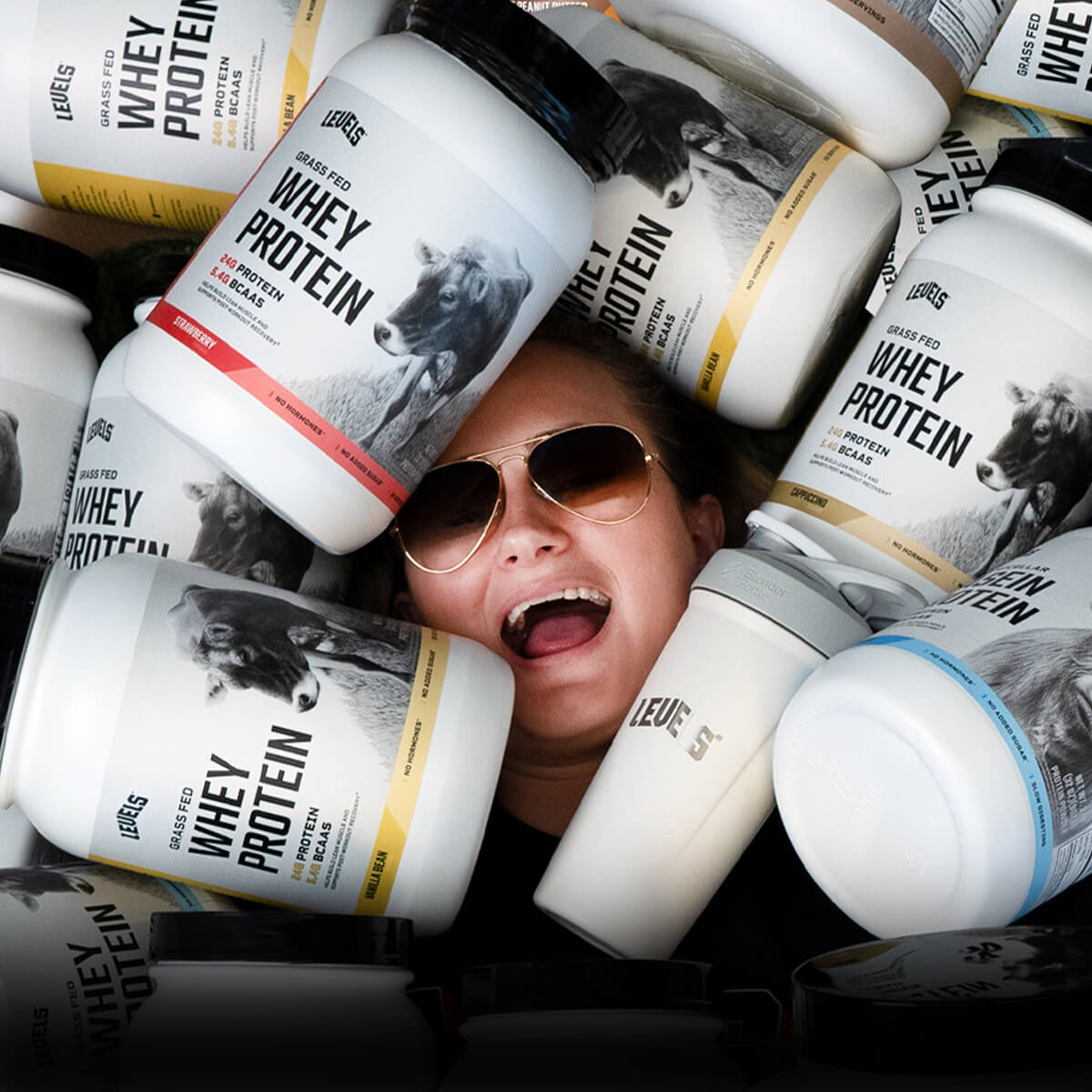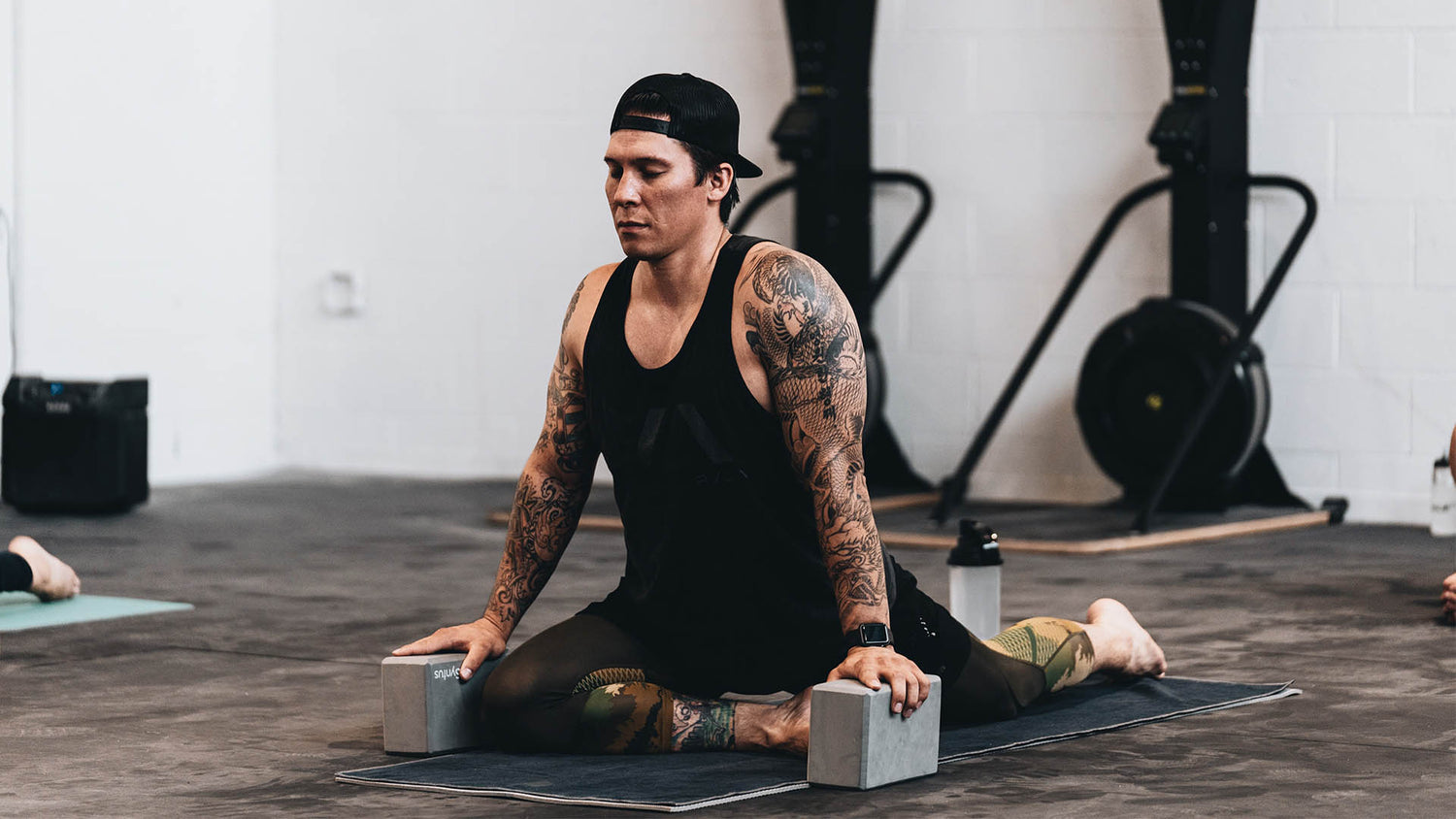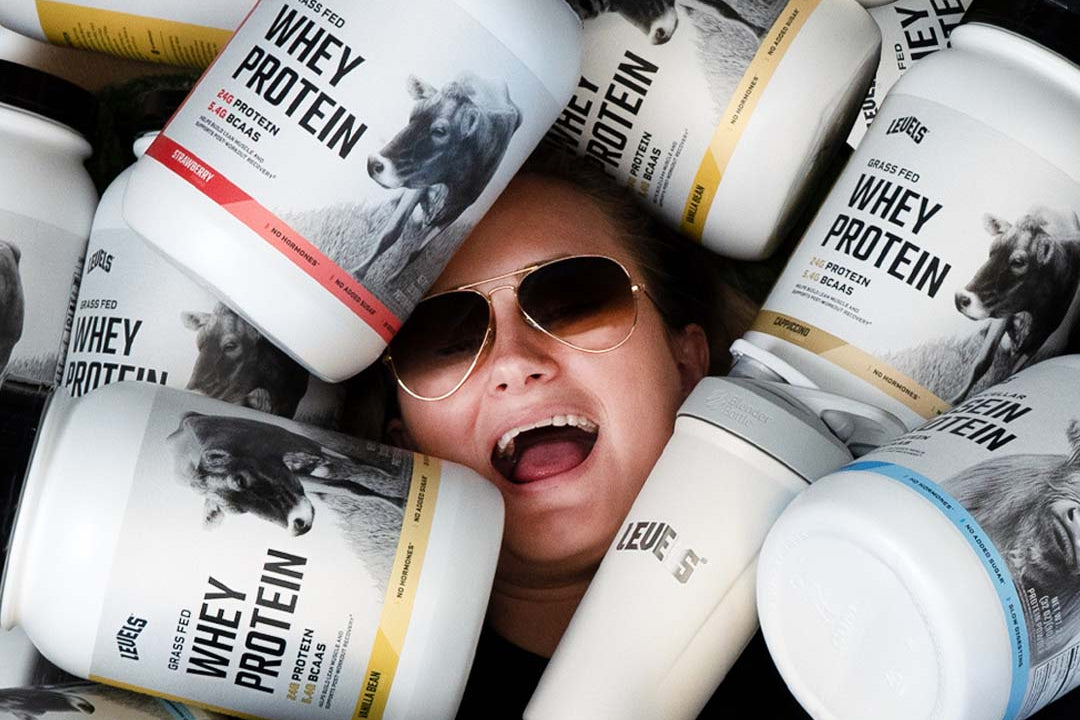Muscle soreness is usually the result of inflammation in your body. There are several different types of inflammation that can cause this symptom.
The most common type of muscle soreness in active people is DOMS (delayed onset muscle soreness), which sometimes sets in within 1-2 days following exercise or manual labor[*][*].
DOMS can be debilitating, but it's mostly harmless, unlike sprains, tears, and other injuries.
On the other hand, muscle soreness can also be a sign of dietary imbalance or nutrient deficiency, such as[*][*][*]:
- Insufficient protein intake
- Not eating enough calories to support recovery
- Mineral deficiencies that result in cramps and soreness
- Eating inflammatory, processed foods that contribute to inflammation
Basically, sore muscles are a signal from your body that something might not be quite right.
Keep reading to learn the 10 best foods that help sore muscles and speed up recovery.
The 10 Best Muscle Recovery Foods
1. Whey Protein for Post-Workout Recovery
If you’re feeling sore after training, there’s a significant chance you’re not eating enough protein, or that you’re consuming protein from low-quality sources.
Whey protein is a highly effective recovery supplement and a nutritious food that’s an excellent source of complete, high-quality dietary protein.

It’s high in essential amino acids (EAAs) and branched-chain amino acids (BCAAs) and very easy to digest, which is why scientists rank it among the all-time highest-quality protein sources[*].
Studies also show that whey protein can:
- Decrease muscle soreness,
- speed recovery, and
- increase muscle protein synthesis
You can use whey protein as a daily supplement to ensure you obtain enough protein to support recovery. Research suggests that 1 gram of total daily protein intake per pound of body weight is an excellent starting point for active people.
2. Steak as a Whole Food Protein Source
Steak may not be as portable or convenient for post-workout consumption compared to protein shakes, but it’s one of the best protein choices for regular meals.
A 12-ounce grass-fed ribeye provides 720 calories, 66 grams of protein, 51 grams of nourishing healthy fats, and 0g carbs and sugars, making it a well-rounded nutrition powerhouse[*].
Beef protein is also high in EAAs and BCAAs and helps reduce the breakdown of muscle tissues, which can aid with muscle-building and recovery[*].
One study comparing a mixed meal with 40 grams of beef protein versus 70 grams of beef protein found the larger quantity of beef protein was even more effective at decreasing muscle protein breakdown[*].
Steak is also an excellent source of the amino acid glutamine, which some evidence suggests can speed recovery and lessen muscle soreness following exercise[*][*].
3. Collagen Peptides for Sore Joints
Some muscle soreness is an expected part of training hard, but sore joints can make movements painful and severely limit your performance.
Collagen peptides, also known as hydrolyzed collagen protein, are the only protein source proven to decrease joint soreness associated with physical activity.

A 24-week-long study from Penn State University found that young athletes with activity-related joint pain who took 10 grams of collagen peptides per day experienced lower pain levels while resting as well as during movement[*].
As an added bonus, the scientific literature also supports the role of hydrolyzed collagen for easing osteoarthritis pain[*][*].
Finally, a study of people over the age of 50 found that taking 12 grams of collagen peptides per day for 6 months significantly improved their back pain[*].
4. Omega-3 Fatty Fish to Decrease Systemic Inflammation
Sometimes, painful or inflamed muscles are a sign of systemic inflammation.
And one of the main causes of inflammation in modern people is the consumption of highly processed foods that are high in inflammatory omega-6 fatty acids[*].
Along with decreasing your intake of inflammatory processed foods, eating more fatty fish rich in omega-3 is one of the best ways to reduce systemic inflammation.
The upshot is that having a balanced ratio of omega-6 to omega-3 is not only much better for your cardiovascular health and brain health, but may also reduce muscle soreness[*][*].
According to a 2014 study, men who received the omega-3 fatty acid DHA daily experienced less muscle damage and inflammation following damaging exercise compared to men who didn’t[*].
And a separate 2011 study of healthy young and middle-aged men and women found that long-chain omega-3 fatty acids increased muscle protein synthesis responses to amino acid and insulin elevations[*].
In other words, omega-3s could also help with repair, recovery, and muscle-building after strenuous exercise.
The best whole food sources of omega-3s are fatty fish and shellfish like salmon, mackerel, anchovies, sardines, oysters, clams, and shrimp. Try to eat high omega-3 foods at least twice a week (more frequently is great, too).
5. Extra Virgin Olive Oil to Reduce Muscle Inflammation
Omega-3s aren’t the only healthy fat with anti-inflammatory properties.
Many researchers think that extra virgin olive oil is a star player in the health benefits of the Mediterranean diet, and that it works by reducing inflammation[*].

Evidence suggests olive oil has at least 36 compounds with antioxidant properties that are likely to decrease inflammation, including in skeletal muscle tissue[*][*].
The antioxidant phenolic compound oleocanthal is especially effective at reducing inflammation[*].
With 120 calories, 13g grams of fat, and 0g carbs per tablespoon, extra virgin olive oil is an ideal source of healthy fats and also a convenient way to increase your calories to support recovery if needed[*].
6. Avocados for Antioxidants and Minerals to Ease Muscle Pain and Cramping
Avocados have a well-deserved reputation as a keto diet superfood, but they’ve got standout benefits for athletes and active people, too.

Not only are avocados high in monounsaturated fatty acids and natural antioxidants similar to olive oil, but they’re also an excellent source of minerals that can ease muscle pain and prevent cramps[*].
A medium California avocado contains[*]:
- 227 calories (kcal)
- 2.6 grams of protein
- 21 grams of total fat
- 2.5g net carbs
- 9.25 grams of fiber
- 690 mg potassium (23% DV)
- 39.4 mg magnesium (9% DV)
Although the evidence is mixed, consuming adequate amounts of potassium, magnesium, and other electrolytes (such as sodium) may help prevent muscle cramps and pain, especially in physically active people[*][*][*].
So if you experience cramping or similar muscle pain symptoms, a daily avocado with some added sea salt could be the perfect fix.
7. Blueberries for Anti-Inflammatory Polyphenols
Studies suggest that plant-based antioxidants called polyphenols can reduce muscle damage, decrease soreness, and lessen inflammation in muscle tissue[*].

Blueberries contain very high levels of polyphenol antioxidants called anthocyanins[*]. Anthocyanins are responsible for the deep bluish-purple color of blueberries.
A 2012 study found that in 10 women, consuming blueberries helped speed recovery from exercise-induced muscle damage, which was likely due to the berries' anti-inflammatory benefits[*].
8. Carbs for Insulin Release and Glycogen Synthesis
Research shows that adding sugar to your diet, especially as part of beverage consumption, has the potential to increase inflammation levels[*].
However, most nutritional research examines average people who don’t exercise regularly.
If you train hard, carbs–even sugary ones–can actually play a beneficial role in your nutritional strategy.
Studies show that carbohydrates can:
- Decrease protein breakdown by releasing insulin[*]
- Increase muscle protein synthesis when paired with amino acids from dietary protein[*]
- Support the creation of glycogen in your muscles to fuel exercise performance[*]
If possible, time carbs according to your exercise routine. For example, you can “carb-up” before exercise, and consume additional carbs for each hour of intensive activity[*].
Researchers often use a 2-to-1 carb-to-protein ratio to support recovery between exercise bouts, or a 4-to-1 ratio to fuel prolonged exercise (such as endurance sports)[*].
You can use nearly any carb source, but it’s probably best to stay away from ultra-processed foods.
Some healthier choices include sweet potatoes, oatmeal, dates, or raisins.
Just remember to be realistic. If you’re not engaging in strenuous physical activity, your best bet for controlling inflammation is to limit carbs, especially sugary ones.
9. Natural Probiotic Foods for Faster Recovery and Less Soreness
You might be aware that probiotic foods can decrease inflammation in your gut, but what’s less commonly known is that they might be able to reduce muscle inflammation, too[*].
A 2016 study found that the probiotic strain Bacillus coagulans reduced muscle damage, improved recovery, and helped maintain performance after damaging exercise[*].
And a separate 2016 study found that the probiotics Streptococcus thermophilus and Bifidobacterium breve reduced muscle tension and prevented performance decline following muscle-damaging exercise[*].
Researchers aren’t entirely sure why probiotic bacteria seem to decrease muscle inflammation, but it could be that gut health influences muscle inflammation.
Regardless, you probably don’t need to seek out the exact strains used in recent studies. Yogurt, kefir, and other traditional fermented foods are convenient and time-tested ways you can get plenty of beneficial probiotic strains in your diet.
10. Turmeric for Anti-Inflammatory Curcumin
People have long used the golden-yellow root of the turmeric plant (Curcuma longa) as a culinary ingredient (while fresh), a spice (in dried and powdered form), and as a medicinal herb or tea.
Although it contains several anti-inflammatory compounds, the most powerful compound in turmeric is the bright yellow chemical curcumin.
Early evidence suggests that curcumin can reduce pain, soreness, and muscle damage markers associated with heavy resistance training, and may help maintain performance[*][*].
Turmeric and curcumin are also an effective option if you’ve got joint pain or arthritis. According to a 2009 trial, curcumin was equally effective compared to ibuprofen for treating knee osteoarthritis[*].
Other Proven Remedies to Reduce Muscle Soreness
Food is an essential part of your recovery equation, but it’s not the only way to ease sore muscles.

Use this checklist of research-backed remedies to minimize your soreness levels:
- Include a light warmup before strenuous exercise to decrease the chances of soreness[*].
- Walking and low-intensity aerobic activity on non-training days can increase blood flow, speed recovery, and may reduce soreness[*].
- Plenty of sleep is mandatory for exercise recovery. Try a 90-minute nap for an added recovery boost[*].
- Foam rolling can decrease muscle pain, increase flexibility, and boost physical performance[*].
- Static stretching after exercise appears to have minimal benefit for soreness, but it’s effective for easing painful muscle cramps[*][*].
- Therapeutic massage or sports massage is shown to help ease muscle tension and reduce soreness[*].
Last but not least, keep in mind that your body needs time to adapt to physical activity.
Research suggests that DOMS is most likely to occur with novel activities (such as new movements or a new exercise program), so your soreness may resolve on its own as your body grows accustomed to your current routine[*].
Conclusion: How to Deal With Soreness
Run-of-the-mill DOMS (delayed-onset muscle soreness) is usually harmless, but it can still be extremely uncomfortable.
Research shows that whey protein is highly effective at decreasing DOMS, speeding recovery, and enhancing exercise performance[*][*].
Some soreness is a normal part of training, but excessive soreness may point to an underlying problem you need to address.
If foods like collagen peptides and fatty fish don’t help your muscle and joint soreness, you may have an injury or other condition that would benefit from medical attention.
Speak to your doctor if you experience prolonged soreness, or if your soreness becomes more painful over time.
